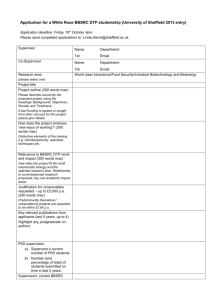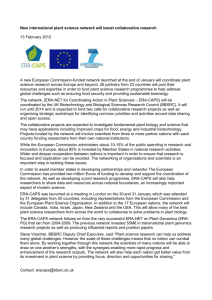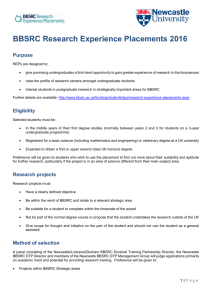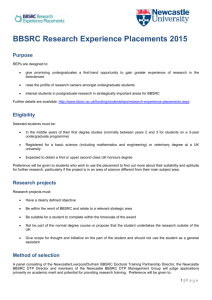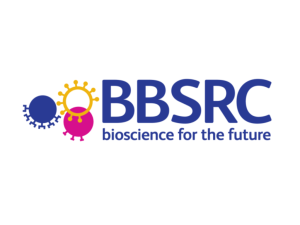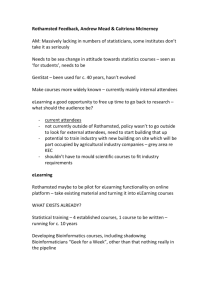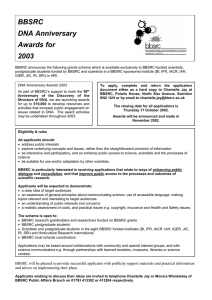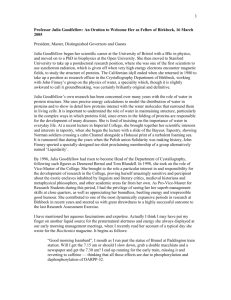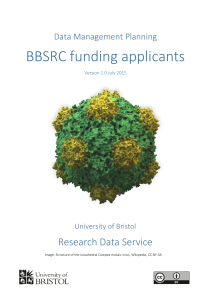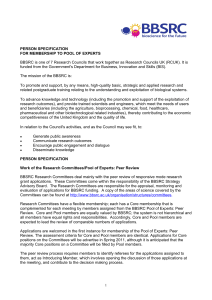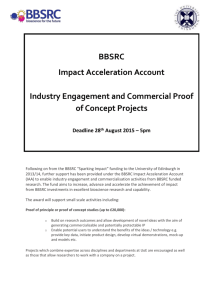bbsrc - Research Data Management
advertisement
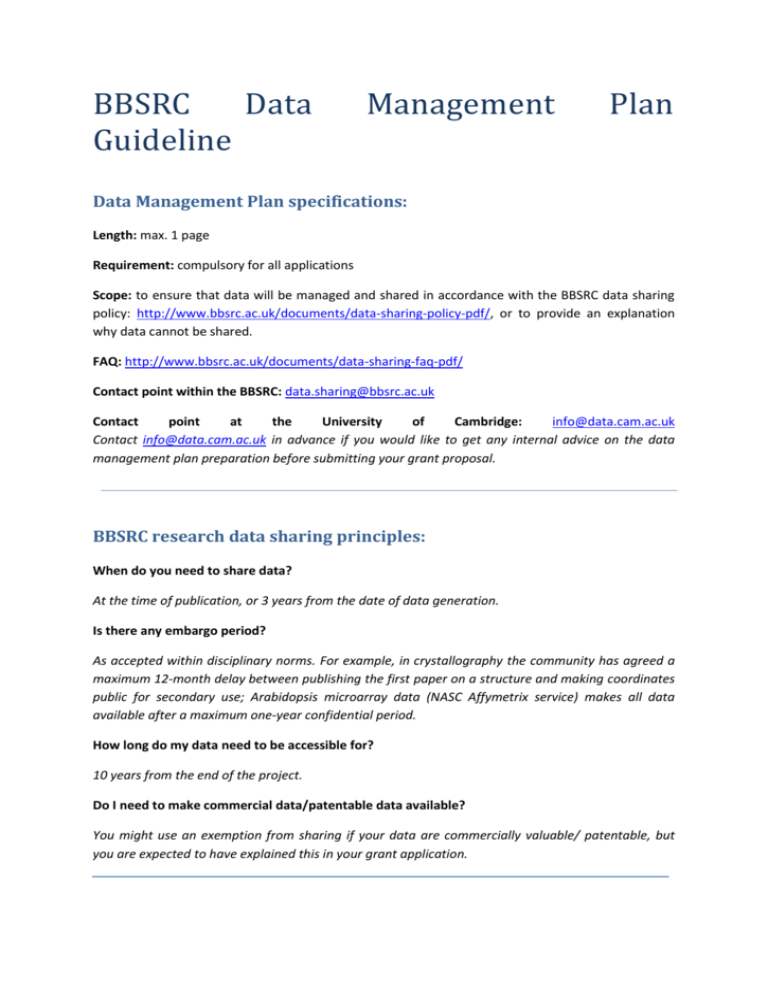
BBSRC Data Guideline Management Plan Data Management Plan specifications: Length: max. 1 page Requirement: compulsory for all applications Scope: to ensure that data will be managed and shared in accordance with the BBSRC data sharing policy: http://www.bbsrc.ac.uk/documents/data-sharing-policy-pdf/, or to provide an explanation why data cannot be shared. FAQ: http://www.bbsrc.ac.uk/documents/data-sharing-faq-pdf/ Contact point within the BBSRC: data.sharing@bbsrc.ac.uk Contact point at the University of Cambridge: info@data.cam.ac.uk Contact info@data.cam.ac.uk in advance if you would like to get any internal advice on the data management plan preparation before submitting your grant proposal. BBSRC research data sharing principles: When do you need to share data? At the time of publication, or 3 years from the date of data generation. Is there any embargo period? As accepted within disciplinary norms. For example, in crystallography the community has agreed a maximum 12-month delay between publishing the first paper on a structure and making coordinates public for secondary use; Arabidopsis microarray data (NASC Affymetrix service) makes all data available after a maximum one-year confidential period. How long do my data need to be accessible for? 10 years from the end of the project. Do I need to make commercial data/patentable data available? You might use an exemption from sharing if your data are commercially valuable/ patentable, but you are expected to have explained this in your grant application. BBSRC data management plan template The BBSRC suggests the following eight headings (in bold) to be used in your data management plan. In italics you have comments available to you from the University of Cambridge. 1. - Data areas and data types What will be the volume of your data? What type of data will you generate? E.g. experimental measurements, models, records and images o Remember to budget for your research data sharing; the cost of data sharing via the University of Cambridge data repository is £4/GB, as a one-off charge for storing your data for 10 years from the last access 2. - Standards and metadata What standards will you use for your data and why? o The BBSRC suggests that “in order to maximise the potential for re-use of data, BBSRC researchers should generate and manage data using existing widely accepted formats and methodologies where available.” o For example, if you are generating genomics data, what are the commonly used file formats? o If you generate data in proprietary file formats, is it possible to export your data into open file formats? What are your proposed data management strategies? Possible items to be discussed here: o Your data backup strategy o How will you share your data with your collaborators during the project? (if you have any external collaborators) o You data organisation or file naming conventions, for example, TILS file naming convention: http://www.tils.qut.edu.au/initiatives/informationmanagement/documents/GDL_TILSD ocNaming_V1_20090612.pdf How will you describe your data? o The BBSRC suggests that “data should be accompanied by the contextual information or documentation (metadata) needed to provide a secondary user with any necessary details on the origin or manipulation of the data in order to prevent any misuse, misinterpretation or confusion. Where standards for metadata exist, it is expected that these should be adhered to.” o You may say here that you will follow disciplinary guidelines, if they exist (for example, as created for proteomics experiments: http://www.psidev.info/node/91). If no discipline-specific standards exist, you may decide to follow the disciplinary guidelines prepared by the Digital Curation Centre: http://www.dcc.ac.uk/resources/metadatastandards - - 3. - - Relationship to other data available in public repositories Are similar data to these that you propose to generate already publicly available? If so, what is the missing gap between the data currently available, and these that you are planning to generate? Will you use any existing datasets in your research? 4. Secondary use - Do you foresee any future use/re-use of your data after the end of your project? 5. Methods for data sharing - What are your plans for data sharing? Where would you like to deposit your data? Are you considering depositing your data into a data repository, which guarantees that your data will be accessible for 10 years from the end of your grant? (as required by the BBSRC)? o Information on available data repositories can be found here: http://www.data.cam.ac.uk/repository - Who will be able to access your data? Will you make it publicly available, or do you have legitimate reasons to restrict the access to your data? 6. Proprietary data - Are you working with commercial or patentable data? If you need to restrict the access to your data because these are commercially important or patentable data, you should provide the details here. 7. Timeframes - What is the timeline when you will release research data resulting from the project? o For example, you may wish to say that all results from this research will be published, and data will be released together with publications - The BBSRC expects that research data will be released timely, and as ‘timely’ they define: “no later than the release through publication of the main findings and should be in-line with established best practice in the field. Where best practices do not exist, release within three years of generation of the dataset is suggested as a guide.” o The BBSRC allows embargo period, if that’s accepted within the community standards o According to the BBSRC “data from large studies may be released in waves as they become available or as they are published.” 8. Format of the final dataset. This question is redundant to what is asked in “Standards and metadata” and the BBSRC does not provide any specific guidelines for answering this question. Therefore, if you have already described the format of your data in “Standards and metadata” you may wish to refer to file formats, as described in Standards and metadata.
